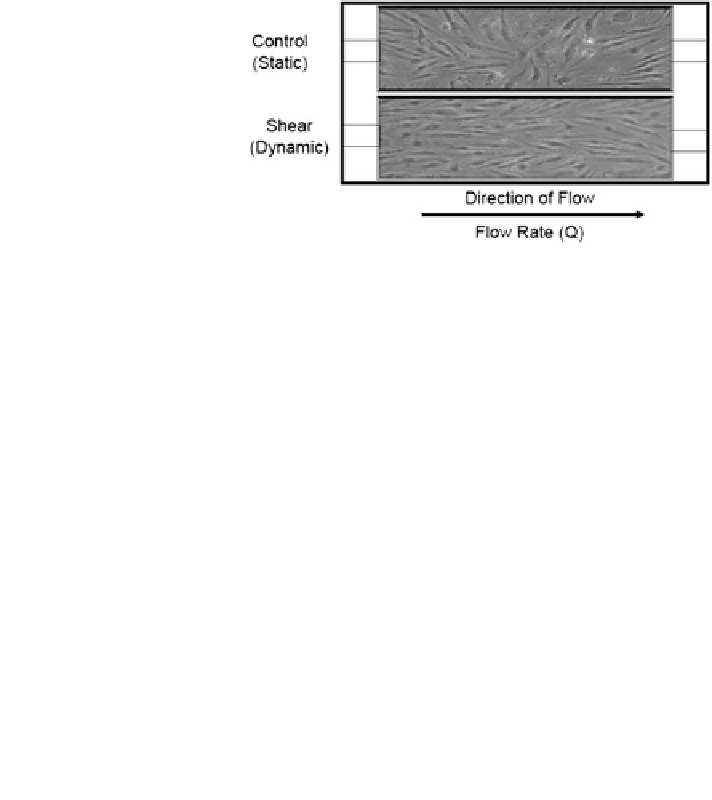Biomedical Engineering Reference
In-Depth Information
Fig. 2 Transformation of
Endothelial Cell Morphology
by Shear Stress. Alignment of
endothelial cells by shear stress
in a parallel-plate flow
chamber. HUVECs were
exposed to physiological stress
of approximately 6 dynes/cm
2
for 12 h aligned with the
directions of blood flow
Apply the first boundary condition to eliminate c, and then integrate again,
when the second boundary condition is used, the result is:
"
#
h
2
2
y
2
u
¼
1
2l
dP
dx
ð
6
Þ
By integrating Eq. (
6
) over the height, the volumetric flow rate per unit width
can be solved.
h
3
6
¼
h
3
12l
q
¼
1
2l
dP
dx
dP
dx
ð
7
Þ
Assuming two-dimensional flow (since the side walls are much further apart
than the parallel plates, or b
h):
Q
¼
h
3
b
12l
dP
dx
ð
8
Þ
An expression for shear stress can be obtained by using Eq. (
5
) with c
1
= 0,
noting that s
¼½
ldu
=
dy
y
¼
h
=
2
, and substituting for dP/dx from Eq. (
8
)
s
¼
dP
dx
h
2
¼
6lQ
ð
9
Þ
bh
2
It is assumed that flow is laminar, which is true for the low Reynolds number flow
being investigated. This laminar flow is also steady state, which helps to simplify the
modeling of the shear stress. Another assumption is that the fluid is Newtonian and
incompressible, which for the case of blood flow is acceptable (Fig.
2
).
3.4 VEGFR2 and Mechanotransduction
VEGFR2 is important for normal endothelial cell proliferation, migration, and
angiogenesis. VEGFR2 was established as having a role in the mechanosensory
steps preceding integrin activation in integrin-mediated mechanotransduction [
42
].

Search WWH ::

Custom Search